Want to enjoy your summer vacation, but there are flying ants invading your pool? It can be annoying to learn their presence in your pool that takeout the excitement.
Ants, specifically flying ants, can be bothersome to deal with. Although they may seem harmless, they may prove challenging to deal with, especially if there is a swarm already.
How to get rid of flying ants in the pool? To get rid of flying ants in the pool, do a quick survey in the area to find out the cause so that you can do appropriate solutions. Some of these are using vacuum, proper garbage disposal, pool cover, do-it-yourself insecticides, or buying commercial ones. Additionally, you can always call a pest control expert.
These ways are easy to do and will only require a little amount of time and effort. In this article, you will learn some information and ways to deal with getting rid of flying ants.
Table of Contents
An Overview of Flying Ants
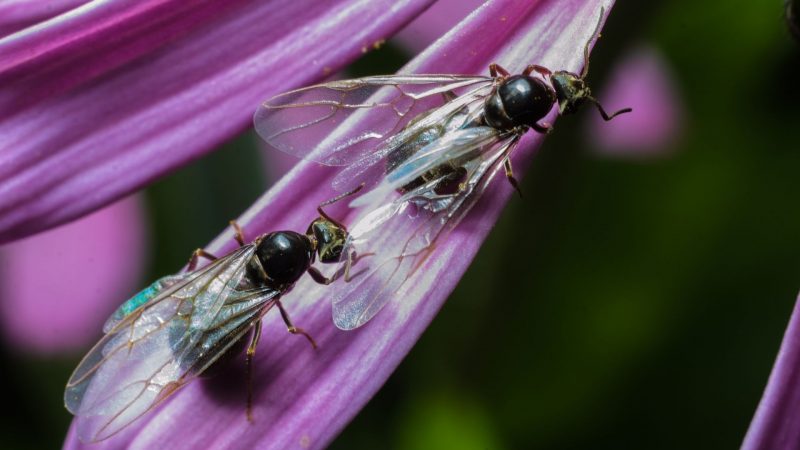
There are a lot of ant species living in varied habitats, consuming a variety of food. Flying ants (scientific name: Lasius niger) are also known as alates or swarmers. These flying ants swarm and fly about when it is time for the mating season. They have to get out of the colony to start a new generation of ants. The queen in this new colony will then give birth to hundreds of ants that will have their own function in the group. Later on, a new group of flying ants will leave the colony to continue the cycle. These winged ants will eventually lose their wings at a certain point in their life. One example type of a flying ant is the winged carpenter ant. This type of ant likes to stay in moist and woody areas.
It is important to identify if the swarmers in your pool area are flying ants and not flying termites. Flying termites eat wood and can cause damage to your house.
Check Your Pool
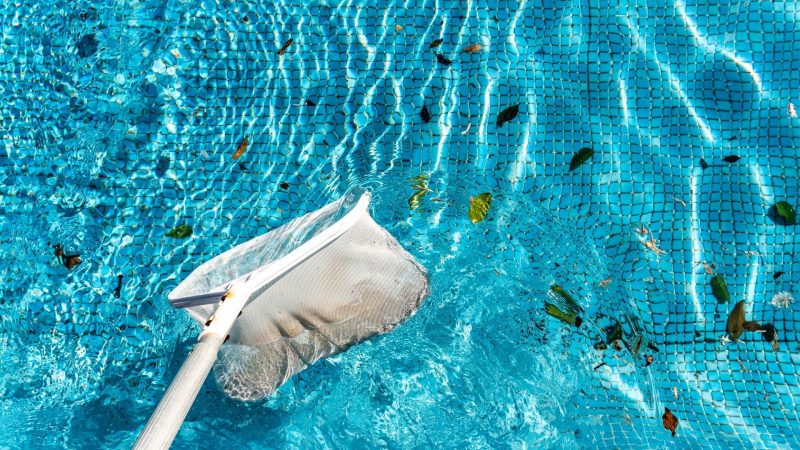
The pool is an area where several structures come together. If flying ants keep fluttering about, chances are they fall and get stuck in the water. If this happens, you have to scoop them out of the water using a net skimmer or a pool vacuum. After cleaning the water from dirt, leaves, or insects, keep your pool clean.
In keeping your pool clean, you have to use a good net to keep the water clean. A good quality pool cover is also a great help. This secures that the water in your pool is free from leaves, dirt, and also insects such as flying ants. Aside from that, pool covers also help in retaining the water level during hot summer days, saving you the time to maintain the level of water in your pool. There are different types of pool net with varying purposes. Make sure you check the specifications of the product before buying one.
Surveying the Area
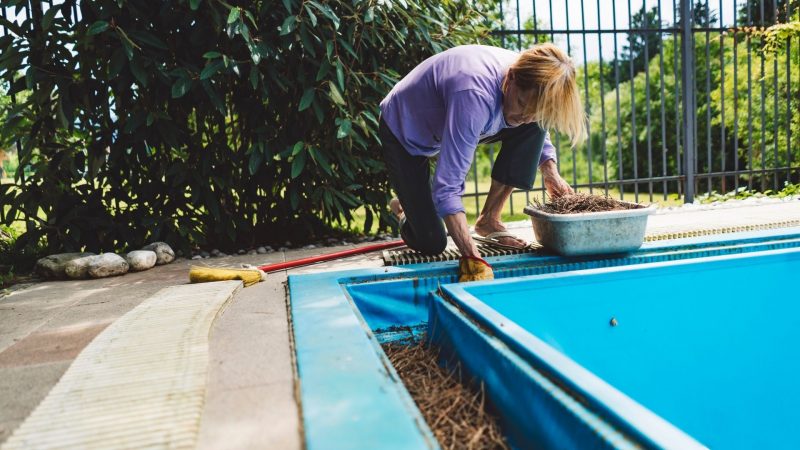
If you find a large number of these insects in your swimming pool area, most likely, there is a nest nearby. You have to do an inspection in the pool area and check your surroundings to see if there is indeed a colony of ants. If there is none, you can just use your vacuum to deal with flying ants in the area. After dealing with the flying ants, make sure of the following:
- Your place should be free from trash or food crumbs to avoid the presence of unwanted creatures such as ants. One reason why there are ants in your pool is that they have access to the food supply.
- You might also want to check your food storage. It is better if you keep food in airtight containers and maintain clean and mess-free storage.
- Proper garbage disposal is also a good thing. If your place is clean, insects like ants will not be attracted to stay.
Damage to Property
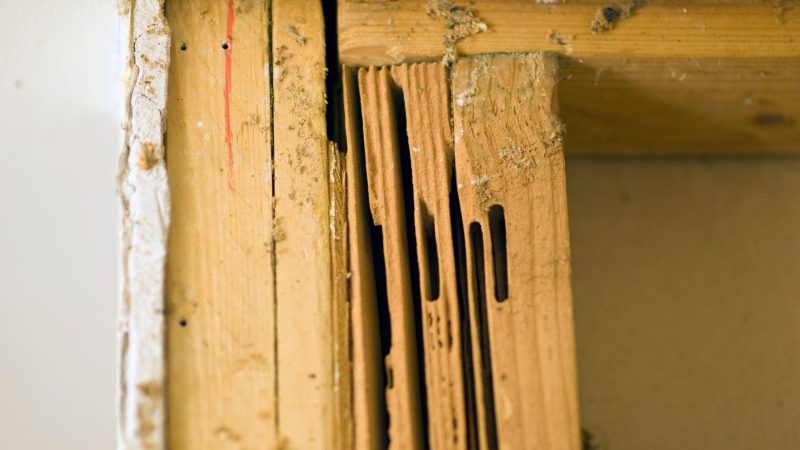
As for the winged carpenter ants, you better check out areas near the pool where wood is the main structure. Carpenter ants cause damage to structures by hallowing or excavating wood for their nest. It is better to make sure that you clean them up before they start to multiply. If part of the structure is already damaged, you have to replace it already. After doing all these, you might want to install fly traps to catch the remaining flying ants.
Getting Rid of Flying Ants Using DIY or Commercial Methods
Create Your Own Mix
If you find a colony of ants and the first strategy, cleaning up the area, does not work, you can use chemicals to solve the problem. There are DIY insecticides that you can try out. Some suggest the use of the following:
- Soap and water to wash the pheromone trail of ants.
- Another is mixing borax, sugar, and water to make a paste for ant baits.
Here is a video about using borax, sugar, and water as ant bait:
Whichever DIY insecticide you use, make sure to check first if the chemical you are mixing is safe for home use. The advantage of using DIY insecticides is that most of them are budget-friendly. On the other hand, the disadvantage would be a hassle for some to do the mixing, and it can only provide a temporary solution to the problem.
Using Chemicals to Get Rid of Flying Ants
Aside from DIY solutions, you can also select from a wide variety of commercial insecticides or pesticides to deal with flying ants. These insecticides come in different forms. It can be granular, spray, or gel. Before you choose which product to use, follow the tips below:
- Make sure you check first if the insecticide or pesticide is legal in your area. There are some countries that prohibit the use of pesticides, such as phorate, paraquat, or those containing the chemical dimethoate. These chemicals were banned due to high toxicity levels that can be harmful to humans and the environment.
- You should also read and check the label first before using the product. If you are not sure about the safety of the product for home use, you can contact customer service or the regulatory agency in your area.
Here are some of the best-selling products from Amazon that you can choose from:
There are customers who provide fair and honest reviews about these products. Going through them before buying anything will save you from wasting time and money.
Electronic Zappers
Aside from using chemicals, you can also turn to gadgets that help in eliminating flying ants. There are a lot of affordable electric fly swatters from Amazon. Examples would be:
- Lamotta’s Indoor Mosquito Killer and Flying Bugs Trap
- Ultrasonic Pest Repeller (Indoor)
The advantage of these electronic zappers is that they are easy to use and install. You just have to take precautions where you are going to place the device. One disadvantage would be the limited space coverage of these devices. For the pool area, you might need to install more than one device.
When to Call a Professional?
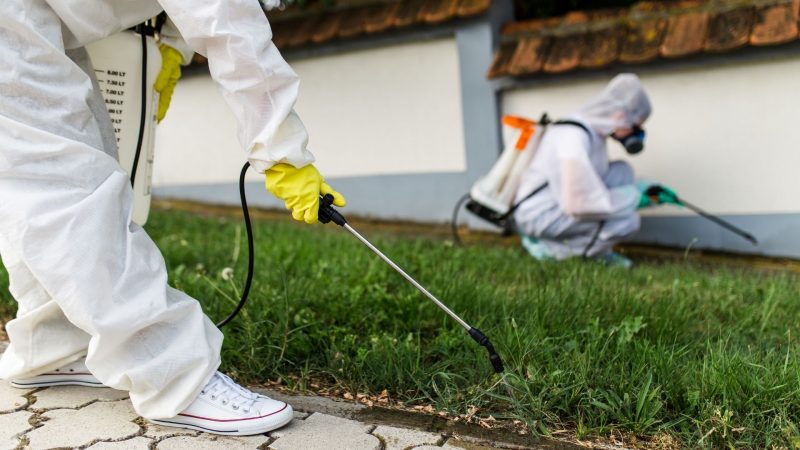
Have you tried everything that you can but still failed to solve the problem at hand? Are the ants getting out of control? Is it already infesting the house? Then, you might want to consider calling the help of a professional. You can call a licensed exterminator to get rid of flying ants if you have tried the other options, but they failed to work. Professional exterminators have been trained to deal with this kind of problem. They can also give you advice on how to identify if there is already an infestation in your house and prevent problems brought about by these insects.
Safety First

Now that you have identified your options for dealing with flying ants in your pool, do take note that you have to prioritize your safety before doing anything. Take into consideration the pros and cons of the product before using it. If you are going to use a certain product, check if:
- It will affect the plants that you have near your pool.
- You have an allergic reaction to any of the ingredients of the product.
- It can cause irreparable damage to your property.
Always remember to take precautions; your safety should always come first.
Summary
There are several options that you can choose from when dealing with insects, such as flying ants. However, it is important to note that not all insects are pests. It would be best if you opt for products that are safe for you and the environment.